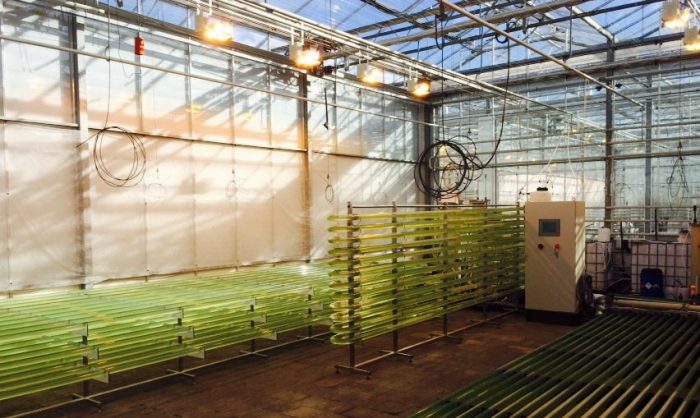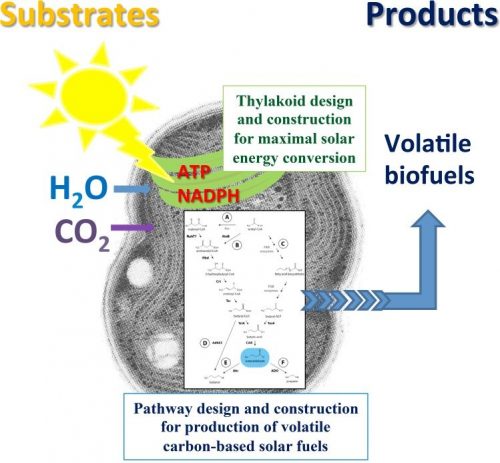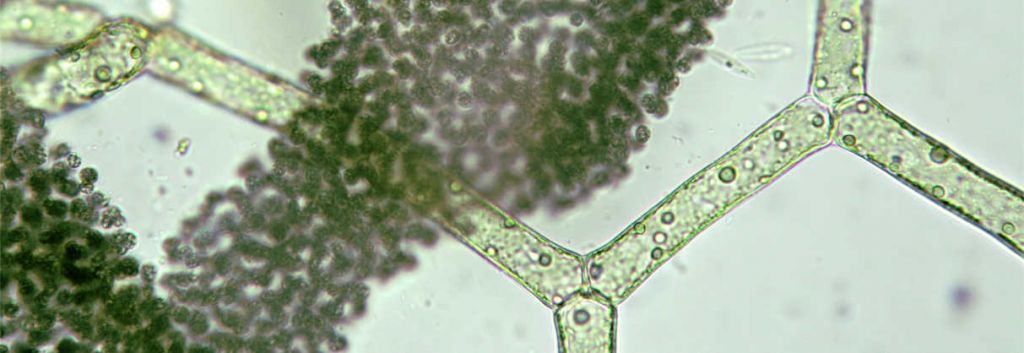Producing fuels and chemicals from CO2 and light has long been a dream of Biotech, and Amsterdam-based Photanol is working on making it an industrial reality with engineered cyanobacteria. I had a chat with Ross Gordon, Director of Business Development, about Photanol’s strategy.
Photanol was present at the latest European Bioplastics Conference to present how it uses cyanobacteria, sunlight and CO2 to produce lactic acid, the small molecule that makes the popular bioplastic PLA. While most of the discussion focused on supporting and enabling first-generation bioplastics, made with feedstock like sugar, Photanol is skipping ahead two generations of biobased products, waste biomass and algae, to land at the fourth stage: synthetic biology platforms.

Photanol was founded in 2008 as a spin-off of the University of Amsterdam, taking advantage of the area as a “center of expertise in cyanobacteria”, according to Ross Gordon. In 2012, Photanol attracted enough VC funding to build a pilot plant with a capacity between 200 and 1000 L. This enables them to produce lactic acid in the kilogram scale, which so far “is competitive with other conventional sources”. Photanol also struck a 3-year partnership with AzkoNobel, a big Dutch producer of paint with a market cap of €14Bn.
“Our core competency is developing strains of cyanobacteria”, explains Gordon . This is where Photanol’s approach may beat algae, which have a lot of potential but are harder to genetically engineer, and thus harder to make into a platform. The main benefit of having a platform is that “we could produce any biochemical“.

For now, however, Photanol is focusing on organic acids that are sold in bulk and can replace existing products (drop-ins), such as lactic acid. One area from which Photanol is steering clear in the near future is the niche market of flavorings, which is popular with synthetic biology but “harder to predict”.
As the pilot stage wraps up successfully, “our technology risk has decreased a lot, but our commercial risk is increasing” as the company enters a period known as a startups’ Valley of Death. In order to survive it, Photanol is now working to put together a consortium with 2 large industry partners. The consortia would support the next step, building a demo plant with a capacity between 10 and 20 tons. After this 3-year process, Photanol could finally move into the kiloton scale and into the market.

As the market grows, is there truly a need to replace first-generation feedstocks with direct carbon capture strategies? “I don’t have an opinion on the topic”, says Gordon, but “consumers’ views matter”. A major selling point for bioplastics is sustainability, which is increased with Photanol’s technology. Industrial partners are also interested in decreasing their “CO2 risk“, if and when a real CO2 tax is created. “We don’t see it happening soon. Right now, we are working to make Photanol viable within the current policy”, Gordon points out. “We’ll make sure the technology is ready when this tax is implemented.”
Solar-based chemicals and carbon capture are popular concepts, which yielded exciting research like this new carbon-fixing metabolic pathway. It was really great to talk to Gordon and see how these are being brought to the industry.
Images: Photanol; SrjT (Shutterstock ID488184214); Photanol; Eva-Mari Aro (2016) From first generation biofuels to advanced solar biofuels. Ambio (doi: 10.1007/s13280-015-0730-0)





